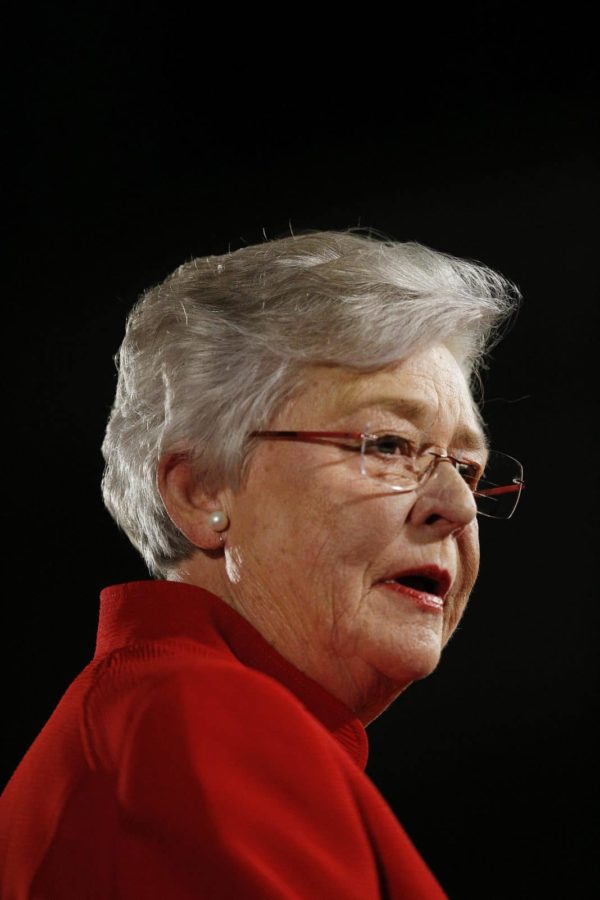
Alabama Gov. Kay Ivey, who is proposing a plan to let school administrators store guns in locked safes on campus.(AP Photo/Brynn Anderson, File)
BIRMINGHAM, Ala. (AP) — A plan by Alabama Gov. Kay Ivey to let principals and other administrators store weapons on campus so they can respond to shootings drew mixed reactions Thursday, with an education group expressing support and the NAACP calling it “the absolute worst idea.”
Ivey’s “School Sentry Program” would allow administrators in schools that do not have a law enforcement officer on campus to access a weapon kept in a fingerprint-controlled safe.
Principals or other administrators who pass required testing, qualify as sheriff’s deputies and have weapons permits would receive specially marked, bullet-proof vests to wear during a school shooting so police wouldn’t mistake them for a killer.
Ivey’s office said the program is voluntary and school systems can decide whether to participate, and the Alabama Law Enforcement Agency will oversee training.
The Alabama Association of School Boards said that while having trained school resource officers is the “optimal first line of defense” and arming school personnel isn’t a long-term solution, it recognizes Ivey’s desire to move quickly to protect children.
“The Alabama Sentry program appears to be a reasonable, interim solution with some sensible safeguards until the legislature can address this issue,” Sally Smith, executive director of the association, said in the statement.
The National Association for the Advancement of Colored People was sharply critical of the move.
“This is the absolute worst idea imposed on students,” said a statement by Benard Simelton, president of the Alabama NAACP. “Since the Columbine school massacre in 1999, more than 215,000 students have been exposed to gun violence in schools. The answer to stop gun violence is not to bring in more guns.”
It’s wasn’t immediately clear how many of Alabama’s 1,473 public schools lack school resource officers and would therefore be eligible to arm administrators.
A spokesman for the Alabama Department of Education, Michael Sibley, said a recent survey of superintendents turned up 250 total officers in local school districts. Not all systems responded, and the state was trying to determine exactly how many schools don’t have officers, said Sibley.
The National Association of School Resource Officers, which provides training to school-based law enforcement officers, has said it opposes arming teachers, but other states and local systems are trying it.
At least one local school district near Dayton, Ohio, has installed gun safes in schools so workers can get to weapons if a shooting occurs, and two Georgia school districts have approved plans to let select staff members carry guns.
While a proposal to let Alabama teachers carry guns didn’t pass in this year’s legislative session, a school safety task force recommended putting more officers in schools. Ivey said she supports that, and the “sentry” program will provide protection meanwhile.


